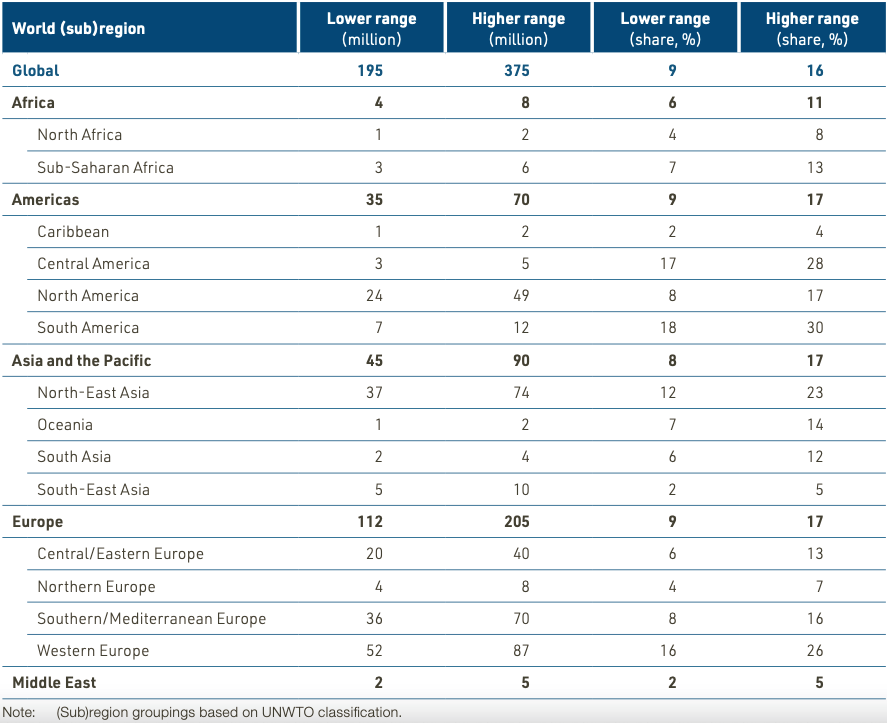
Rome: Mountain tourism has proved to be a lifeline for many communities in mountain regions which are home to around 1.1 billion people, representing around 15% of the global population some of them among the poorest and most isolated in the world.
Such tourism can play a leading role in protecting livelihoods adapted to these fragile ecosystems, which face continuous threats from climate change and overexploitation, QU Dongyu Director-General of the Food and Agriculture Organization of the United Nations (FAO), and Zurab Pololikashvili Secretary-General of the World Tourism Organization (UNWTO), wrote in the Foreword of a report Understanding and quantifying mountain tourism, released today. Its publication coincided with a ceremony at FAO’s headquarters in Rome marking the end of the International Year of Sustainable Mountain Development 2022.

Mountains have long-drawn walking, climbing and winter sports fanatics. They also attract visitors for their spectacular scenery, rich biodiversity and vibrant local cultures. However, in 2019, the most recent year for which figures are available, the 10 most mountainous countries (in terms of average height above sea level) received only 8 per cent of international tourist arrivals worldwide.
Mountain tourism, if managed sustainably, has the potential to boost the incomes of local communities and help preserve their natural resources and culture. However, a lack of data and knowledge on the subject is preventing them from fully seizing such opportunities.
“Measuring the volume of visitors to mountains is the first vital step we need to take. With the right data, we can better control the dispersal of visitor flows, support adequate planning, improve knowledge on visitor patterns, build sustainable products in line with consumer needs, and create suitable policies that will foster sustainable development and make sure tourism activities benefit local communities,” FAO Director-General QU Dongyu and UNWTO Secretary-General Zurab Pololikashvili wrote in the report’s foreword.
Estimated share of mountain tourism in international tourist arrivals, world and regions

The report points out that mountain tourism is estimated to represent only between 9% and 16% of total international tourist arrivals, which is equivalent to a range of between 195 and 375 million international arrivals, based on 2019 numbers. The range shows differences across regions and countries. In countries where mountain tourism is a primary motivation of visit and where there is a higher tourism concentration and specialized product offer, the share is also higher in the total of international tourism. In other destinations, with large mountain ranges, the share of mountain tourism vis-a-vis total inbound is less important due to a more diversified tourism offer or an early stage of mountain tourism development, or due to a higher weight of domestic demand in mountain tourism.
Effective planning and management of mountain tourism required a better understanding of its size and economic, social and environmental impacts. To date, the data available was very limited. As the sector recovers from the unprecedented impact of the COVID-19 pandemic, there is an opportunity to rethink mountain tourism and its impact on natural resources and livelihoods, but also to manage it better and to harness its contribution towards a more resilient, inclusive, and sustainable future.
The report published by FAO, UNWTO and the Mountain Partnership (MP) seeks to address such gaps in order to reach a better understanding of the subject. The publication also identifies trends and provides a set of recommendations to advance the measurement of mountain tourism, including progress on official tourism statistics and the use of big data and new technologies.
The study seeks to address this by developing a new methodology and providing as clear a picture as possible, based on available data and tailor-made surveys, of trends in mountain tourism globally and at the regional level for Africa, the Americas, Asia and the Pacific, Europe and the Middle East. It recommends a collective effort, involving public and private stakeholders across the value chain, to improve data collection, standardization and delivery to gain a more comprehensive assessment of mountain tourism in terms of volumes and impacts so that it can be better understood and developed to align with the Sustainable Development Goals.
The report also calls for concerted work to help raise awareness of the socio-economic importance of tourism in the mountains and targeted policies to create jobs, support small and medium-sized businesses and attract green investments in infrastructure and digitalization of tourism services.
– global bihari bureau





